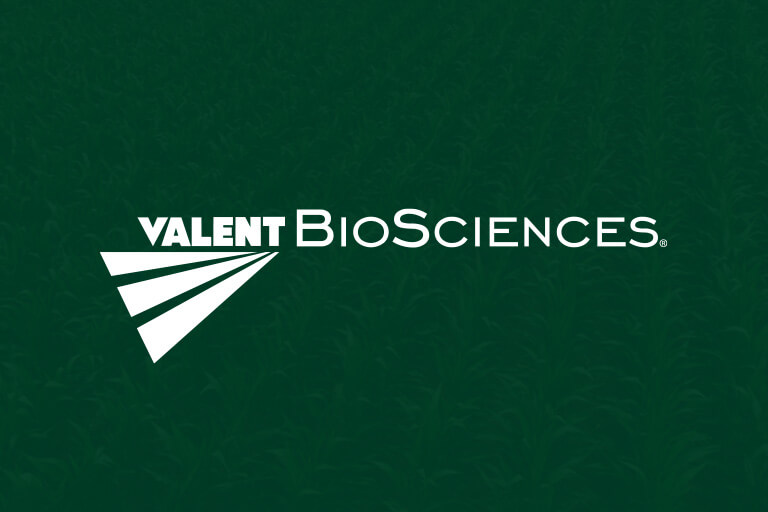What is Integrated Pest Management?
Integrated Pest Management (IPM) is a science-based, multi-pronged approach to prevent pests or minimize their damage. IPM does not rely on a single method to control pests, and an effective IPM program should utilize all available pest control tactics. These can be biorational (non-chemical) controls, resistant crop varieties, crop rotation, or chemicals. When feasible, preventative non-chemical control tactics should be used as a first line of defense.
IPM is a long-term strategy, and using multiple approaches in your IPM program can conserve your resources and money in the long run. When only a single management tactic is used, some of the problems that may arise include pest resistance and secondary pest outbreaks.
By knowing and understanding: 1) the dynamics of your growing system, 2) when and where pests can become problematic, and 3) the management strategies you can employ, an effective IPM program can save you money and is environmentally friendly.
How Does IPM Work?
A successful IPM program requires you to be proactive, not reactive. You will need to evaluate factors that affect the pests and their ability to thrive. In general, an IPM program has 5 steps:
IPM Stage | Description | How to Maximize Value with Biorationals |
1. Identify | Identify the pest that is causing or could potentially cause problems. Outside expertise, such as local agronomists, retailers, extension services, or the internet, may be available to help you with this identification. | Check pesticide labels for target pests to ensure you are using the right product. For example, DiPel® DF Biological Insecticide and XenTari® DF Biological Insecticide will only control caterpillar pests while Gnatrol® WDG Biological Larvicide is only labeled for fungus gnats. |
2. Monitor and Measure | Depending on the pest, you’ll need to regularly inspect plants, traps, or the soil to measure populations. Monitor the pest to answer the following questions: 1) What is its current stage of development? 2) Are pest numbers increasing, falling, or stable? Maintain records so you can evaluate changes in the severity of the pest and/or damage. | Effective timing is one of the most important factors in maximizing the value of every application. Most pesticides, including biological control products such as DiPel and XenTari, are more effective against early larval stages. |
3. Assess Thresholds | If pest thresholds have been established, use these to determine if any action is necessary to prevent economic loss to the crop. | While assessing pest thresholds, consider that biological pesticides may need to be applied earlier than other modes of action to maximize their benefit. For example, DiPel and XenTari are most effective when applied as close to egg hatch as possible. |
4. Implement | Formulate an action strategy based on all options available. This is the “integrated” component of IPM. Consider what is economical, physically feasible, effective, and least toxic. | Using biological pesticides like Aveo® EZ Biological Nematicide to protect against yield-limiting nematodes at the beginning of the season can prevent the need for control measures later in the season. Start the season with a unique mode of action, such as using DiPel or XenTari from IRAC group 11, to manage resistant populations and preserve other active ingredients into the future. |
5. Evaluate | What were the results of the pest management tactics? Continued monitoring and record keeping are required to determine if the pest management actions produced the desired results. | When assessing biocontrol efficacy, consider the speed of action and mode of action. For example, DiPel and XenTari stop caterpillars from feeding quickly, but it may take a few days for larvae to die. Aveo EZ protects roots from nematode damage but may not reduce total nematode population. |
Using Biorationals in IPM
What are biorationals?
Biorational is an umbrella term for substances that have little to no environmental impact and are typically biologically derived. If biorationals are synthetic, they are similar to biologically occurring material. With increasing regulations on synthetic chemistries, surging costs, expanding pest resistance, and a rising number of climate-related weather events, biorational products are key to equipping growers with effective options for their IPM programs.
How do you use Valent BioSciences' biorationals in an IPM program?
DiPel® Biological Insecticide, XenTari® Biological Insecticide, AmyloShield™ Biological Fungicide, and LEAP® Biological Insecticide Bacterial Disease Management can be used for different target pests in an IPM program.
Brand | Active | Target Pests |
Bacillus thuringiensis subsp. kurstaki (Btk) strain ABTS-351 | Caterpillars | |
Bacillus thuringiensis subsp. aizawai (Bta) strain ABTS-1857 | Caterpillars (Diamondback Moth, Fall Armyworm) | |
Bacillus amyloliquefaciens strain PTA-4838 | Powdery Mildew, Botrytis, Downy Mildew | |
Bacillus thuringiensis subsp. kurstaki (Btk) strain ABTS-351 and methyl salicylate | Caterpillars, Bacterial Plant Diseases (Goss’s Wilt, Pseudomonas spp., Xanthomonas spp.) | |
Bacillus amyloliquefaciens strain PTA-4838 | Nematodes | |
Bacillus thuringiensis subsp. israelensis strain AM65-52 | Fungus Gnat Larvae |
Here are a few tips to keep in mind while planning your IPM program:
- Timing is important. For example, caterpillars are easiest to manage with Bacillus thuringiensis (Bt) when they are small.
- Using the right tool at the right time in the right way will save money and provide the best ROI, especially with biorational or biological solutions.
- Use biorational pesticides as part of a management program in conjunction with other control options.
Transitioning to an IPM program can help reduce resistance issues and secondary pest outbreaks and return more value to your wallet.
For more information on integrated pest management and biorational products from Valent BioSciences, watch the video below:
To view the biorational portfolio, explore our available products here.
Speak to your local representative for more information and product availability in your region.
DiPel, XenTari, LEAP, Aveo, and Gnatrol are registered trademarks of Valent BioSciences LLC. AmyloShield is a trademark of Mycorrhizal Applications LLC.






